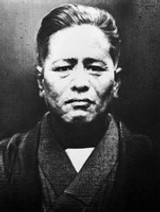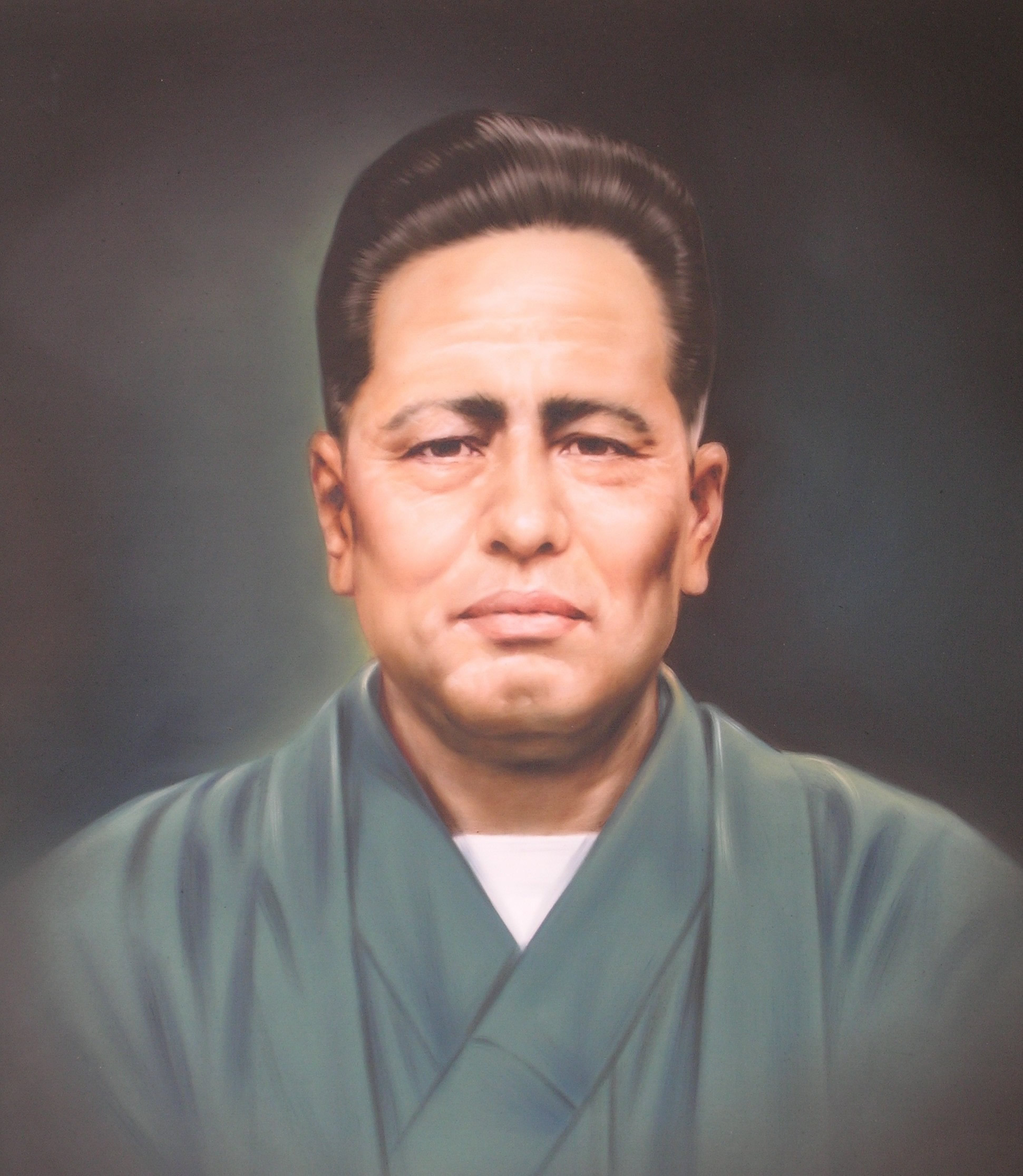“Gentleman Warrior Bushi Miyausuku”

Chojun Miyagi 1888 – 1953
“Gentleman Warrior Bushi Miyausuku”
Grandmaster Chōjun Miyagi was an Okinawan martial artist who founded the Goju-ryu school of karate by blending Okinawan and Chinese influences. Very pleasant in nature, he was affectionately called “Bushi Miyagusuku” (Gentleman Warrior Miyagi).
Miyagi began his study in Karate-do at age nine. He first learned martial arts from Ryuko Aragaki, who introduced him to Kanryo Higashionna when Miyagi was 14. Under his tutelage, Miyagi underwent a very long and arduous period of training.
In May 1915, before the death of Higaonna, Miyagi travelled to Fujian Province, China, and visited the grave of Higaonna's teacher, Ryu Ryu Ko. After Kanryo Higaonna's death (Oct, 1915) he returned to Foochow (Fujian) with Gokenki, where he studied some local Chinese martial arts. As well, he observed the Rokkishu (a set of hand exercises rather than a formal kata, which emphasizes the rotation of the forearms and wrists to execute offensive and defensive techniques), which he then adapted into the Tensho Kata. From the blending of these systems with his native Naha-Te, a new system emerged.
The naming of Goju-Ryu came about more by accident than by design. In 1930, Chojun Miyagi was invited to Kyoto Butoku Kai to demonstrated but he sent his top student instead Jin’an Shinzato. He was asked what school of martial arts he practiced. Naha-te had no formal name at the time and he could not answer this question so he on the spot came up with the name Hanko Ryu. On his return to Okinawa he reported the incident to Miyagi. After much thought, Chojun Miyagi chose the name Goju-Ryu (hard and soft school) as a name for his style. He took the name from the ‘Bubishi’, a classical text on martial arts and other subjects). A line in a poem describing the eight precepts of the martial arts reads: ‘Ho goju Donto’ (the way of breathing is hardness and softness).
Miyagi was committed to the development and spread of karate throughout Okinawa. He introduced karate into Okinawa police work, high schools and other fields of society. He revised and further developed Sanchin - the hard aspect of Goju, and created Tensho - the soft aspect. The highest kata, Suparinpei, is said to contain the full syllabus of Goju-ryu. Shisochin was Miyagi's favorite kata at the end of his years. Tensho was influenced by the White Crane kata Ryokushu, learned from his long-time friend Gokenki. He also created the Shuri-te influenced katas Gekisai Dai Ichi and Gekisai Dai Ni.
Miyagi also worked hard to spread karate throughout mainland Japan. He was invited to teach at Kyoto University, Kansai University and Ritsumei Kan University by Gogen Yamaguichi. In 1933 Goju-Ryu Karate was the first Okinawan martial art to be registered at the Dai Nippon Butoku-Kai, the center for all martial arts in Japan.
Some of his senior students included Meitoku Yagi, Higa Seiko, Miyazato Ei'ichi,Seikichi Toguchi and on the Japanese mainland Gōgen Yamaguchi.
Through Miyagi’s contributions, karate is recognized as a way of life toward self enlightenment in which many practice and strive to reach self perfection.
